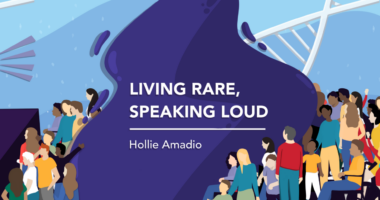Takhzyro Safely Prevents HAE Attacks Over Long Term, Extension Study Shows

Takeda’s Takhzyro (lanadelumab) continues to safely prevent and reduce the frequency of swelling attacks in people with hereditary angioedema (HAE), according to 2.5 years of data from the HELP open-label extension (OLE) trial.
The study’s final results were presented in two company-sponsored posters at the 2020 American College of Allergy, Asthma and Immunology (ACAAI) Virtual Annual Scientific Meeting, held Nov. 13–15. The data will also be published in ACAAI’s journal Annals of Allergy, Asthma & Immunology.
“The unpredictability of HAE attacks has a significant impact on the lives of HAE patients … so reducing the frequency and severity of attacks is an important therapeutic goal for many individuals living with HAE,” Marc A. Riedl, MD, an investigator in the extension study, said in a press release.
“The original placebo-controlled HELP Study demonstrated the efficacy and safety of Takhzyro over 26 weeks. The results from the open-label extension study are encouraging as they show that Takhzyro may help prevent attacks over the long term with continued treatment,” added Riedl, who is also a professor of medicine and the clinical director of the U.S. Hereditary Angioedema Association Center at the University of California-San Diego.
Administered as an under-the-skin injection, Takhzyro is a monoclonal antibody that blocks the activity of plasma kallikrein, a precursor of bradykinin — an inflammatory molecule produced in excess in HAE patients, leading to swelling and pain.
By suppressing plasma kallikrein, the therapy — developed by Shire, now part of Takeda — is thought to lower bradykinin levels and reduce the likelihood of swelling attacks.
Takhzyro is approved for routine prevention of angioedema attacks in patients, age 12 and older, in several countries, including the U.S., the European Union, Canada, Australia, Switzerland, and Brazil.
Its recommended starting dose is 300 mg every two weeks, but dosing every four weeks may be considered, especially for patients who are attack-free and have low body weight.
The therapy’s approval was based on final data from the international HELP Phase 3 trial (NCT02586805), which evaluated the safety and effectiveness of six months of treatment with Takhzyro in 125 people, age 12 or older, with HAE types 1 or 2.
HELP’s final data showed that the therapy, when given at its current recommended dose, significantly reduced the frequency of monthly HAE attacks by 87%, compared with a placebo.
In addition, a greater proportion of participants (about 44%) receiving this treatment regimen remained attack-free throughout the trial, compared with those on a placebo (2.4%), which increased to 77% vs. 3% after the therapy reached a steady concentration in patients’ blood.
At ACAAI’s annual meeting, final results from the HELP OLE study (NCT02741596) were presented in two posters, titled “Long-term Efficacy and Safety of Lanadelumab: Final Results From the HELP Open-label Extension Study,” and “Attack-Free Status During Extended Treatment With Lanadelumab for Hereditary Angioedema: HELP OLE Study Final Results.”
The trial, concluded in October 2019, was designed to evaluate Takhzyro’s long-term safety and effectiveness for up to 2.5 years. It involved 212 HAE patients: 109 who had participated in HELP (rollovers) and 103 who had not enrolled in the pivotal trial (non-rollovers).
Patients’ mean age was 40.7 years, and most were female (67.5%) and had HAE type 1 (89.2%). At the study’s start, they had a mean of 3.1 swelling attacks per month (mean of 3.5 for rollovers and 2.6 for non-rollovers).
Rollovers received a single 300 mg dose of Takhzyro on day 0 and then every other week after their first attack, while non-rollovers were given 300 mg every two weeks from day 0.
Participants received treatment for a mean of 29.6 months (about 2.5 years), with 92.5% of them completing at least one year of treatment and 81.6% completing 2.5 years or more.
Results showed that, compared with the study’s start, patients’ mean HAE attack rate was reduced by 87.4%, with about 76% of them achieving a reduction of 90% or more.
A drop of more than 80% was also seen in the rates of attacks requiring acute treatment (a 93.4% drop), moderate to severe attacks (84.3%), and severe attacks requiring hospitalization for at least one day (96.5%).
Nearly half (47.8%) of participants remained attack-free for nine months following the first dose, 81.8% experienced an attack-free period of six months or more at any point during the trial, and 68.9% had no attacks for at least one year during the study.
The mean duration of the attack-free period was about 14.8 months (over a year), with the maximum being a mean of 19.4 months (about 1.5 years). Moreover, patients were attack-free for 97.7% of days during treatment.
Takhzyro’s safety profile was consistent with that reported in the HELP study, with most adverse events (side effects) being mild or moderate, and the most common being injection-site pain (47.2%), respiratory tract infection (42%), and headache (24.5%).
About half (54.7%) of the participants experienced Takhzyro-related side effects, with injection-site pain as the most common (42.5%).
The extension study’s findings were consistent with those seen in the HELP trial and support the sustained safety and effectiveness of Takhzyro over an extended treatment period.
“Continued research such as the HELP Study OLE is critical to further build our understanding of the potential of Takhzyro as a long-term preventive treatment option for those living with HAE,” said Donatello Crocetta, MD, Takeda’s global medical head of rare immunology and metabolic diseases, chief medical office.
Since Takhzyro’s first regulatory approvals in 2018, it is clear “the difference it has made by preventing attacks in many patients around the world,” he added.





